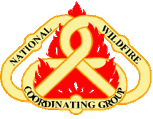This is the first of three (3) SAFENETS on three separate fires in the Intermountain Region on the issues of safety relating to leadership, Personal Protective Equipment (PPE); and the arrogance, persistent attitude, and Double Standard held by current and/or former Smoke Jumpers (SMJ's) performing in overhead positions. The overhead on this particular fire were Division Supervisors and Task Force Leaders.
Initially, the Strawberry Fire was a Type III incident, with the majority of the Operations personnel being SMJ's and/or former SMJ's. For the first two days of the Type 3 incident, I was the 'Team Safety Officer' when most of these SMJ overhead failed to comply with basic PPE standards and failed to set a good leadership example for the Resources they supervised.
The main issues were SMJ's and/or former SMJ's overhead with ball caps and NO hardhats, fire shirt sleeves rolled up, fire shirts unbuttoned halfway or more, fire shirts thread-bare and torn, and carrying tools over their shoulders on a fairly regular basis, while on the firelines.
The other Agency Crew leaders and wildland firefighters themselves were rarely a problem. Contractors stated that they 'followed the lead of the overhead' regarding wearing PPE. One should be safe and follow safety protocols because it's the right thing to do and NOT because a Safety Officer is present.
This occurred for several days even into the Type 2 IMT transition. I politely and professionally mentioned to each of them numerous times on a daily basis about their leadership roles as supervisors, role models for younger firefighters, and to set a good example as leaders for their subordinates. Attitudes toward my compliance requests were mixed, with some being obstinate and repeatedly resisting, to others apologizing and readily and willingly accepting the corrections.
Those with their shirt sleeves rolled up often revealed bright yellow in their lower sleeves once rolled down, indicating these had been rolled up for several months to several years. In other words, this was a regular and accepted habit that had been allowed to persist by these employees themselves and employees' supervisors, both on their respective home units and on this and previous fires.
These are clearly leadership and attitude issues. Some of these even fall into the Hazardous Attitudes realm enumerated on page xi, in the IRPG, namely "Invulnerable - That can't happen to me" and "Anti-authority - Disregard of the team effort."
On leadership, the Red Book is very clear: "The MOST ESSENTIAL element for success in the wildland fire service is GOOD LEADERSHIP. ... The hallmarks of Forest Service leadership are ACTION, ATTITUDE, and ACCOUNTABILITY." (EMPHASIS ADDED) These leadership hallmarks were NOT complied with in the instances listed above.
Concerning hardhats, the Red Book states: "Head Protection - Personnel must be equipped with hardhats AND WEAR THEM AT ALL TIMES WHILE IN THE FIRE AREA." (EMPHASIS ADDED) The SMJ's and/or former SMJ's Overhead were 'equipped with hardhats,' but wore ball caps on the firelines unless they were reminded to wear hardhats - sometimes several times each shift.
Regarding fire shirts, the Red Book states: "REQUIRED PPE - National Fire Protection Association (NFPA) 1977 compliant LONG-SLEEVED flame resistant shirt." (EMPHASIS ADDED)
The assumption here is that the 'required' standard is for the fire shirts to remain LONG-SLEEVED, without them being rolled up.
What is basically occurring is the Normalization of Deviance when we allow these Bad Decisions With Good Outcomes, especially when they are allowed and exhibited by supervisors and fireline overhead.
We hear a lot of talk these days about changing the 'Fire Culture' and working toward a safer wildland fire attitude with safer outcomes. However, what I see occurring on the firelines by SMJ's and/or former SMJ's overhead exhibiting their double standards and unsafe attitudes on these three fires, I am less than hopeful. There is a very long way to go to achieve these necessary and significant goals with the attitude that prevailed on these fires. |



